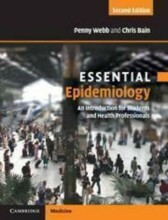The health of young adults and adolescents
6 important questions on The health of young adults and adolescents
Critical and and transitional adulthoods:
During the years of adolescence , children undergo rapid
biological, psychological , and social changes. These include
hormonal changes and the onset of puberty. Psychologically, adolescence is a phase of rapid increase in cognitive and emotional development in various regions of the brain.
Younger adolescents are heavily influenced by their peers, and as adolescents get older they reduce their dependence on their
parents.
Deaths and DALY'S young adults:
The leading causes of death among adolescents and young adults vary by age, sex, and country income group. In lower in-come countries : communicable diseases, these include: intestinal
infectious diseases, diarrheal diseases, TB and HIV/AIDS. As one moves to higher-income countries and older age groups, one notes a shift toward causes such as road injuries , self-harm and
interpersonal violence.
Risk factors and social determinants:
The overwhelming majority of 10-14 years old who die are in low-and middle-income countries. They also continue to die, of mostly preventable, communicable diseases. As one moves to the older age groups, the most important risk factors are increasingly
related to behaviours, such as unsafe sex and alcohol use. However, occupational injury is also important.
- Higher grades + faster learning
- Never study anything twice
- 100% sure, 100% understanding
Early pregnancy and childbirth:
High fertility rates among this group pose grave risks to young women because the risks of dying of maternal causes are higher for women in low-resource settings, especially whose who are
undernourished and of short stature and who give birth at young ages, with short birth intervals, and in places where maternal
health services are weak. Complications from pregnancy and
childbirth are the leading cause of deaths among females aged 15-19
HIV/ AIDS en andere soa's:
Adolescent girls are at particular risk both biologically and socially of becoming infected with HIV. In addition, adolescents and young adults face risks of engaging in alcohol and drugs use that can also
lead to unsafe sexual practices and the transmission of HIV.
Adolescent girls aged 10-19 face particular risks not only for HIV but also for other sexually transmitted infections. These include their
immature reproductive and immune systems, gender norms , age differences and pressure in some settings to engage in
transactional sex or prostitution.
Economic and social consequences of health issues among adolescents:
First, it is clear that maintaining the health of adolescents and young adults is central to maintaining the gains that have
occurred in the health of young children.
Second, the health of adolescents and young adults and behaviours in which they engage set a foundation for their health as adults. Other burdens of disease among adolescents and young adults also have substantial costs.
The question on the page originate from the summary of the following study material:
- A unique study and practice tool
- Never study anything twice again
- Get the grades you hope for
- 100% sure, 100% understanding




























